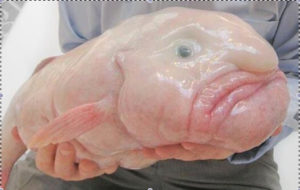A Fun and Intriguing Guide to the Fascinating Blobfish For All Curious Parents
Hello there, wonderful and inquisitive parents! Are your little ones driving you up the wall with their countless animal-related questions? Well, you’ve landed on the right post! Today, we are diving into the mysterious underwater world of Blobfish. Yes, you heard it right, Blobfish! Your kids might just have stumbled upon the world’s weirdest, most adorable, and perhaps the most misunderstood denizen of the deep sea. Say hello to endless hours of interesting conversations with your kids and goodbye to nonsensical myths!
Introducing Blobfish – An Unusual Marvel of Nature
What is a Blobfish?
Blobfish, known scientifically as Psychrolutes marcidus, is an extraordinary species of fish that reside in the deep waters off the coasts of Australia and New Zealand. Unlike other sea creatures you may be familiar with, the Blobfish has evolved in a special way to survive in its unique habitat. Curious to know more? Hold on tight – we’re about to plunge deeper!
What Does the Blobfish Look Like?
In contrast to the sleek and shiny depictions of fishes we often see, blobfish are quite different. They are named “blobfish” for a good reason. Due to the harsh conditions of their habitat, these fishes have developed a gelatinous, almost gooey body structure that’s less dense than water. This allows them to float effortlessly above the seafloor, negating the need for strong muscles or expend energy in swimming.
Unveiling the Unique Lifestyle of a Blobfish
How Does a Blobfish Survive the Deep Sea Environment?
Blobfish lead a pretty carefree life owing to their special bodies. They don’t have a swim bladder – an air-filled sac used by most fish to maintain buoyancy. They simply float along, eating anything edible that passes by. How’s that for a laid-back lifestyle?
What Does a Blobfish Eat?
Though Blobfish aren’t picky eaters, they prefer a diet of crustaceans, sea urchins, mollusks, and other small sea creatures. They use their wide mouths to capture anything that crosses their path. A fascinating example of taking the phrase, “go with the flow” quite literally!
We still have an ocean (pun intended) of fascinating facts about these extraordinary creatures to explore together. Dive further into our guide to continue this fascinating journey and answer all those burning blobfish questions that your little ones might have been asking!
Stay tuned for the next chapters of our Blobfish guide, where we will deep-dive into topics like the lifespan of a blobfish, their reproduction and, of course, why they look the way they do when taken out of their natural habitat! Let’s continue on this exciting exploration of this marvel from the deep.

Delving Deeper into Blobfish Behavior
What’s the Lifespan of a Blobfish?
Though hard information about their lifespan isn’t readily available due to the depth of their habitat, scientists estimate that Blobfish may live for several decades. Imagine the underwater stories a single Blobfish could share!
How Do Blobfish Reproduce?
Blobfish reproduction is as unique as it gets. Female Blobfish lay thousands of small pink eggs on the sea floor. Both males and females guard the eggs to ensure the survival of the next generation, thus displaying a high level of parental care uncommon in deep sea fish.
The Unfair Reputation of Blobfish
Why Do Blobfish Look So Different Outside their Habitat?
Despite being voted as the “World’s Ugliest Animal,” the much-maligned Blobfish is just a fish out of water – quite literally! Its gooey, blob-like appearance out of water is mainly due to the absence of the high pressure of their deep sea habitat. At these depths, the Blobfish’s body would appear more like the fish we’re used to seeing. The slip-slop-gloop look only happens when they are brought to the surface.
What’s the Conservation Status of Blobfish?
Currently, the Blobfish is not classified as a threatened species. Yet, it’s important to remember that our actions in the surface world can directly affect deep sea habitats. So, making conscious decisions would ensure that the marvels of the deep, like our friendly Blobfish, continue to thrive.
Wrapping Up – Everyone’s Favorite Gooey Deep Sea Dweller
So, there you have it! A comprehensive, brain-quenching guide about the wonderfully bizarre Blobfish! This ultimate guide should tackle any query your bundle of curiosity might have. Remember, every question is an opportunity to learn something new together. Happy learning to all dear parents – let’s make today a fun, Blobfish discovery day!
Preparing for A Blobfish Animal: 5 Key Things Every Parent Should Know
Taking on an exotic pet like a blobfish animal can indeed be a thrilling adventure for both parents and children. However, it’s crucial to understand this unique creature’s requirements to provide good care. Here are the top 5 things parents should know while preparing for a blobfish animal.
1. Natural Habitat Conditions
The blobfish, or Psychrolutes marcidus, is a deep-sea creature typically found in the cold, high-pressure environments of Australia, Tasmania, and New Zealand’s waters. Parents should know that recreating these conditions within a home aquarium could be challenging and costly, if not impossible, emphasizing the importance of proper research and preparation for providing optimal care.
2. Rarity and Conservation Status
The blobfish is considered a rare species with an undefined conservation status due to a lack of sufficient data. As responsible parents and global citizens, it is vital to consider the implications our choices might have on the overall ecosystem and this species’ sustainability.
3. Nutrition and Diet Requirements
Blobfish are bottom feeders that consume deep-sea crustaceans. Maintaining a diet that mirrors their natural intake is key to their health and longevity.
4. Mating and Breeding
There’s little known information about the blobfish’s mating and breeding habits due to their deep-sea living conditions. Parents should be aware that breeding these animals at home is likely unrealistic.
5. Low-activity Pets
Parents considering a blobfish for their children should understand that these animals are low-activity pets. Unlike dogs or cats, blobfish won’t provide interactive play or outdoor physical activity. A blobfish could, however, inspire a love for marine biology and environmental conservation.
Remember, adopting any pet, especially an exotic one like a blobfish, requires ample research and preparation. Ensure the animal’s comfort, health, and safety whilst teaching your children the same principles.
For more great articles please see here. For more information see here
Disclaimer
The articles available via our website provide general information only and we strongly urge readers to exercise caution and conduct their own thorough research and fact-checking. The information presented should not be taken as absolute truth, and, to the maximum extent permitted by law, we will not be held liable for any inaccuracies or errors in the content. It is essential for individuals to independently verify and validate the information before making any decisions or taking any actions based on the articles.




